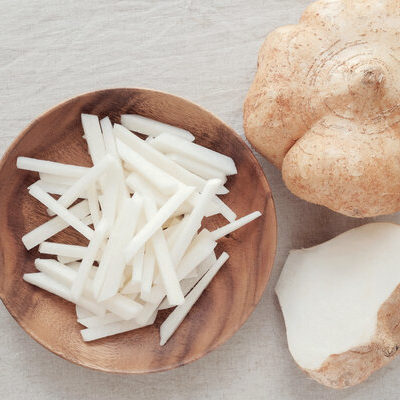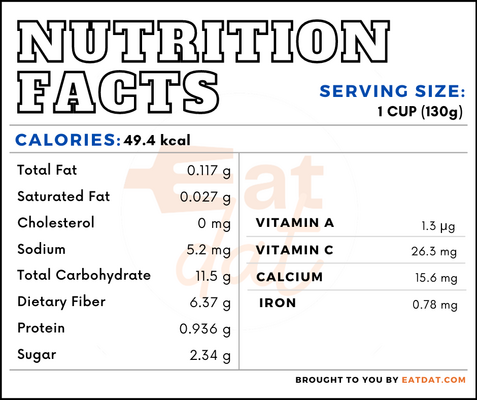
Jicama
What is Jicama?
Jicama is a root vegetable that is native to Mexico and Central America. It is most commonly eaten raw in salads or just seasoned with lemon juice and chili powder, although it can also be cooked. This food has other names such as:
- yam bean
- Mexican turnip
- Mexican potato.
This vegetable is one of the four important elements of the Day of the Dead, celebrated in Mexico on the 1st of November, during which jicama dolls are made from paper. This root vegetable is also popular in South East Asian cuisines.
There are different varieties, including:
- Pachyrhizus erosus (Mexican yam bean)
- Pachyrhizus ahipa (Andean yam bean)
- Pachyrhizus tuberosus (Amazonian yam bean)
- Pachyrhizus palmatilobus
Origin of jicama
This vegetable is a plant that is native to Mexico and Central American countries. Spanish colonization of these countries introduced Europeans to jicama. The Spanish then introduced this food to the Philippines, from where it spread to other Asian countries. Today, yam bean is grown throughout tropical North America, South and Central America, South East Asia, and the Indian subcontinent.
Nutrition
This vegetable is high in complex carbohydrates, but low in glycemic index, which means that it can be safely consumed by diabetic people. It contains high levels of vitamins A & C, folate, choline, calcium, magnesium, phosphorus, potassium, and sodium. It is a good source of dietary fiber, including inulin, a type of prebiotic fiber essential for gut health. The nutrients in yam bean help combat cancer, cardiovascular disease, and diabetes.
One cup (130g) of jicama has a nutritional value of:

Commercial production
The cultivation requires a tropical climate that does not see much frost. For high-quality vegetables, sandy loam soil with good drainage is required. This plant takes anywhere from 4 to 8 months to produce roots and is then harvested by hand or by plowing. Freshly harvested jicama is the most flavorful, as this root ages rapidly and quickly loses its flavor.
Yam bean must be peeled before serving. It has a crunchy and juicy texture, as well as a mildly sweet taste. Fresh jicama can be stored in a cool, dry place for up to three weeks. When already sliced or cut, this food should be refrigerated.
Jicama recipes
This is a nutritious vegetable that can be prepared in many ways. Here are a few recipes:
- Baked Jicama Fries
- Yam Bean Salad
- Yam Bean Slaw
- Singkamas Salad
- Vegan Spring Rolls
- Baby Corn, Ham, and Yam Bean Stir Fry
- Lumpiang Hubad
- Tostadas Gema
- Rujak
FDA regulations
Yam bean is classified under root and tuber vegetables by the FDA. This particular subgroup is addressed in the 180.41 Tolerances and Exemptions for Pesticide Chemical Residues in Food regulation. The USDA classifies jicama as a specialty produce and does not offer any grade standards.
References
Jicama (yam bean) nutrition facts, Nutrition and You, https://www.nutrition-and-you.com/jicama.html
Park, Chan Joo et al. “Jicama (Pachyrhizus erosus) extract increases insulin sensitivity and regulates hepatic glucose in C57BL/Ksj-db/db mice.” Journal of clinical biochemistry and nutrition vol. 58,1 (2016): 56-63. doi:10.3164/jcbn.15-59, https://www.ncbi.nlm.nih.gov/pmc/articles/PMC4706093
